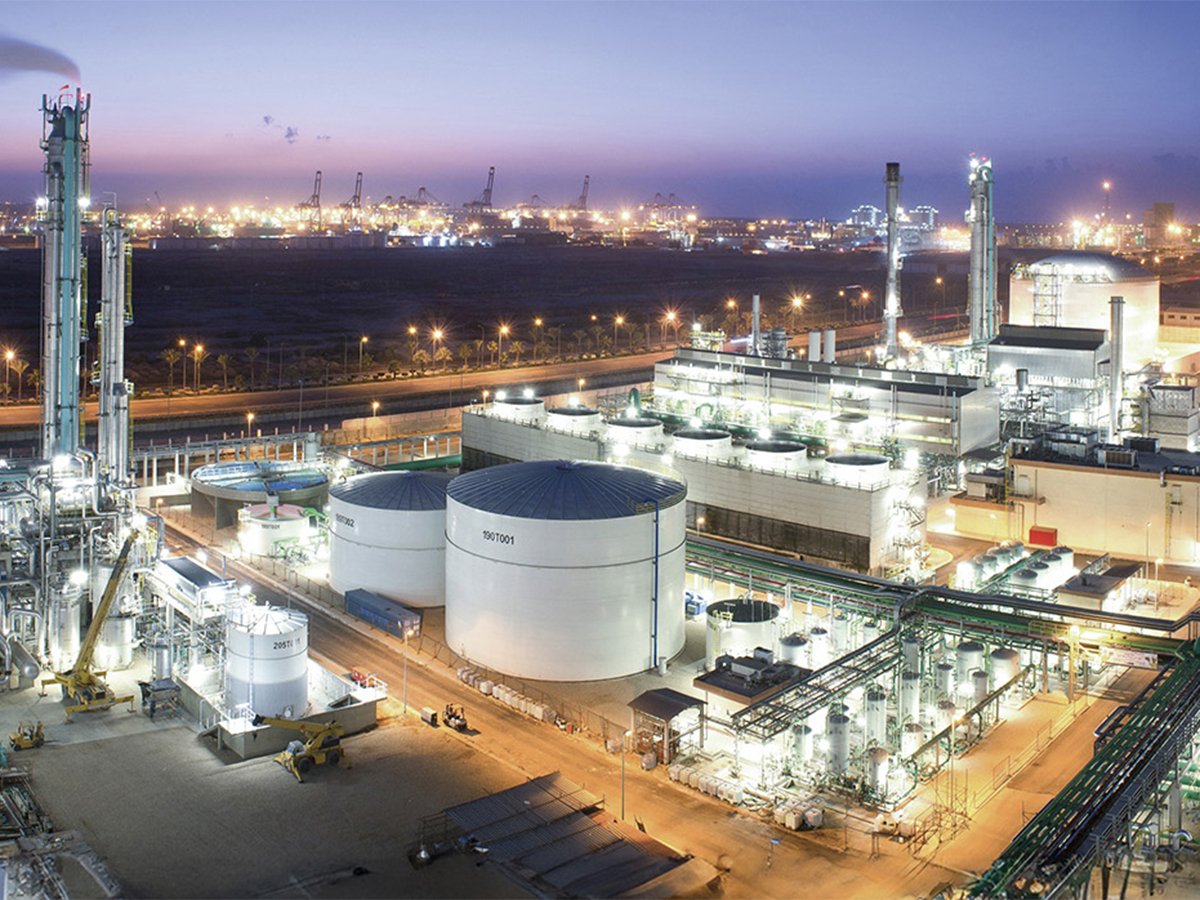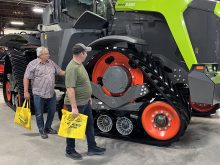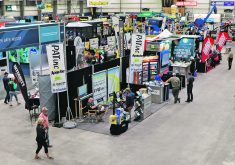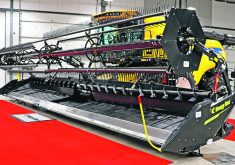This spring a few farmers took delivery of the recently commercialized Ultra SR single rank seeder produced by SeedMaster.
The tool was selected as innovations winner at Regina’s farm show this week.
This seeder has a few unique approaches to seeding and if social media can be used as a gauge, many farmers are leaning over the proverbial fence to see how it performs.
Read Also

Genesis Fertilizers seeks government funding
Genesis Fertilizers is actively seeking funding from government and a strategic partner. The company dispelled a rumour that DL E&C has abandoned the project.
Fifteen-inch spacings on a single rank required the company to develop a spoke wheel between each opener to clear trash. Most seeders on the market use three ranks to prevent trash build up between the openers, but in some instances having multiple ranks can cause additional problems.
Multiple-rank drills equipped with hoe openers can see dirt from the first rank thrown over to where the openers on following
ranks are working. This can affect seeded and fertilizer placement under some conditions, with some toolbars.
So, if the trash cleaning system keeps up the single rank, it could have an advantage when it comes to seed and fertilizer placement.
There can also be an issue keeping depth and opening pressure equal from the front and back rank of multiple rank toolbars when going over rises and through dips.
Drills with independent opening pressures systems and depth gauges are more capable of keeping depth consistent between the front and back openers compared to older toolbars that used the frame height to set seeding depth.
But again, a single rank machine completely bypasses any placement difference between different ranks.
A clear advantage of having a single rank toolbar is that it is much lighter and more manurable compared to competing systems with multiple ranks.
The Ultra SR also uses on-frame tanks that place extra weight on the tractor, which helps improve its traction.
Without a commodity cart in tow, combined with a lighter toolbar and improved traction the Ultra will pull differently compared to other 60-foot seeding systems.
The metering and product distribution system also has a relatively low hydraulic capacity demand, and when this is combined with a lighter draft load a smaller and more fuel-efficient tractors can be used to plant.
One of the more attractive features of the Ultra SR, especially for canola growers, is the metering system SeedMaster also uses with its multi-rank toolbars.
The Ultra SR has SeedMaster’s UltraPro 2 metering system that uses is a venturi style, non-pressurized tank capable of individual row metering that is driven by electric meters.
This enables turn compensation, which likely came in handy this spring in the wetter prairie regions where farmers spent a good portion of their days dodging potholes.
In the seed runs, two separate products can be applied including a starter fertilizer.
The meters for the seed run, include a canola roller, enables the drill to measure very small rates and small seeds.
The Prairie Agricultural Machinery Institute (PAMI) performed third-party testing on the metering system and it found as low a s 3.2 percent variance between the rungs, across the machine.
The fertilizer runs in the Ultra SR also use UltraPro 2 meters, which allows precision fertilizer placement an inch and a half to the side and three-quarters of an inch deeper than the seed with the use of SeedMaster’s dual-knife opener.
Because the meters feed individual runs for each opener, there is no need for manifolds, which automatically makes this system gentler on seed. This is especially helpful with seeds that are susceptible to damage, such as canola and pulses. Considerable savings on canola seed has been achieved with growers cutting rates but still achieving their target plant population.
Most farmers are aware of the Ultra SR’s features, but how did it perform this spring?
I posed a question on Twitter and a few farmers responded with their impressions. I also talked to a few other farmers to see how the Ultra SR worked out for them.
Most of the responses were positive, but there are also a few things that could be improved, according to respondents.
Chris Allam, who farms near Ardrossan, Alta., said he liked how the Ultra SR performed agronomically, but there are changes he would like to see.
“I think we’re going to get more bushels at the end of the day. We’re going to grow a better crop, but there’s some headache things that needs to be fixed up.”
For instance, he wasn’t happy with the monitor.
“It was glitchy and just didn’t display the information you wanted.
“It’s on the Viper display and it’s just not laid out in a convenient manner and it doesn’t have the options you want.”
He said he likes monitors that display the number of acres the product and seed left on the tanks can cover, as well as the number of acres left in a field that still need to be seeded.
Allam said it was frustrating to get on the machine to fill the tank at night, because it was dark and slippery at times when lining up the auger.
Because the Ultra SR does not use a pressurized tank, Allam said it’s impossible to dehumidify the air going into it which can affect its performance in humid conditions.
“We have to run dehumidifiers in the moisture conditions we run in. If a little rain or storm comes through, we’ll keep pushing through it and those meters can gum up extremely fast,” Allam said.
There were also a few spots with heavy trash where the trash clearing system struggled.
“When it can’t pull the trash through, where there’s big trash, its pulled against the wheels and you can’t really just drag it out,” Allam said.
“You have to be really diligent in the fall and get the combine headers low, chop the straw very fine and heavy harrow.”
However, he said he considers the Ultra SR to be a true zero-till machine that has a considerable price advantage over comparable-sized seeders. He said his farm would consider buying another one in the future.
“The reason why we go back to it again is because the crops look so good behind it. The emergence is awesome. We’ll just see if we can attribute that to yield,” Allam said.
Wade McAllister farms with his brother, Scott, near Red Deer. They’ve used the first generation of the Ultra SR for a few years.
Wade likes the simplicity of the seeder.
“Non-pressurized tanks, less openers, no distributors, no manifolds… and minimal horsepower requirements,” McAllister said.
“I only need a minimum of 375 horsepower to pull it. To pull a drill that’s 60 feet wide at six miles an hour with a 400-hp tractor is pretty incredible. I only need 36 gallons hydraulic capacity, so you don’t need that giant tractor anymore that costs over $600,000.”
He said a common complaint of the Ultra SR is that it doesn’t have a conveyor mounted on the side of it.
“To be honest, I absolutely love it. It’s nicer for storing at the end of the year. You don’t have to worry about an auger that’s going to be gummed up and bearing seized up and something you have to clean out at the end of the year,” McAllister said.
“Spend that money and buy a conveyor that you can use 12 months of the year, that’s way better money spent.”
McAllister was able to cut rates of canola seed when using the Ultra SR.
“I cut it probably a solid pound, pound and a half compared to our old drill. So, I was down to 3, 3.2 pounds per acre this year. That’s to get your five to seven plants per sq. foot,” he said.
“There is zero seed damage. It falls out of the meter and goes into that hose and goes right into the ground. And there is excellent distribution across the whole 60 feet because you don’t have those manifolds changing the direction of the seed.”
When it comes to the trash-clearing system, he said the seeder requires a pre-pass with the heavy harrow to manage cereal residue, and that it isn’t suited for seeding directly into cereals residue left from a stripper header.
McAllister said there is a slight yield penalty for using the Ultra SR in cereals including wheat because these crops perform better with row spacings smaller than 15 inches.
However, the bump in canola yields his farm has seen from using this seeder more than makes up for slightly lower wheat yields, he said.
On Twitter, Bob Vandaele who farms near Medora, Man., said the only bad part to the Ultra SR is the trash wheels find everything, including old baler twine, barbed-wire and metal in the fields.
However, on the bright side, he said he will soon have much cleaner fields and he expects easier going the second year it’s used.
There were also a few complaints on Twitter about the foot pedal used to lift the openers, but McAllister said he mounted a two-way hand switch for lifting that made it easier to operate.
On Twitter @farmershaz1 said her farm has three Ultra SRs and that it should be easier to lift the trash wheels from the cab.
“They are great drills, excellent seed placement and field finish, very precise metering. Ours have the design with the roll pins, makes for quite a bit of maintenance, I’m curious about their new design,” she said.
Dustin Williams said on Twitter that his experience with the drill is limited, but so far, he likes it.
“I definitely like the simple and compact design. Navigating the monitor takes patience. A lot of weight on the duals when loaded. I didn’t get as much mud as with my disc drill. Did well in thick residue,” Williams said.
Contact robin.booker@producer.com















